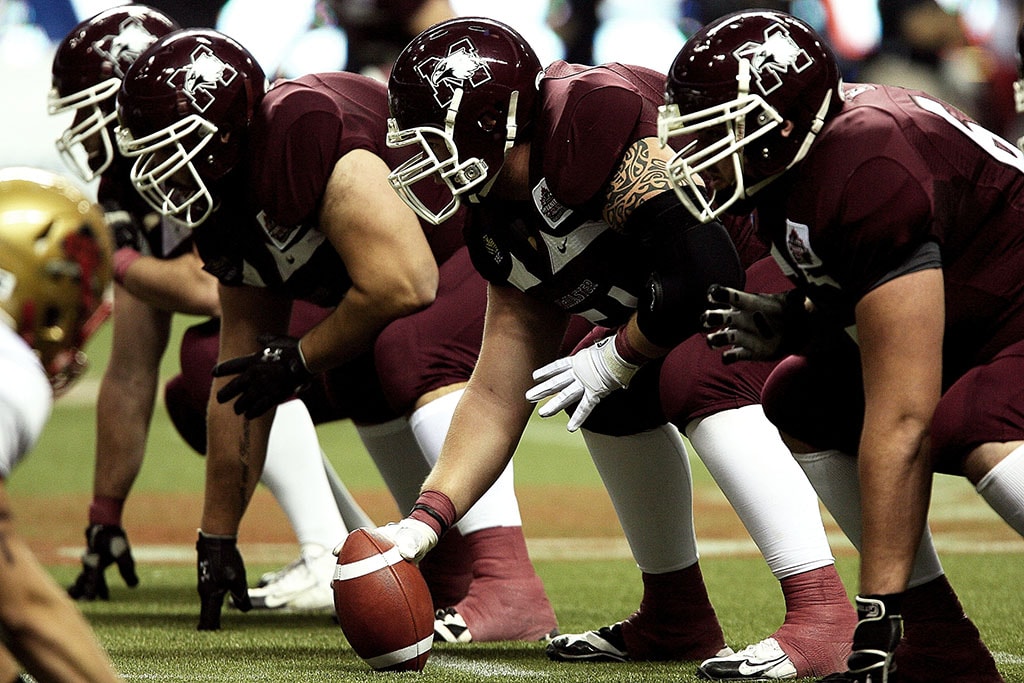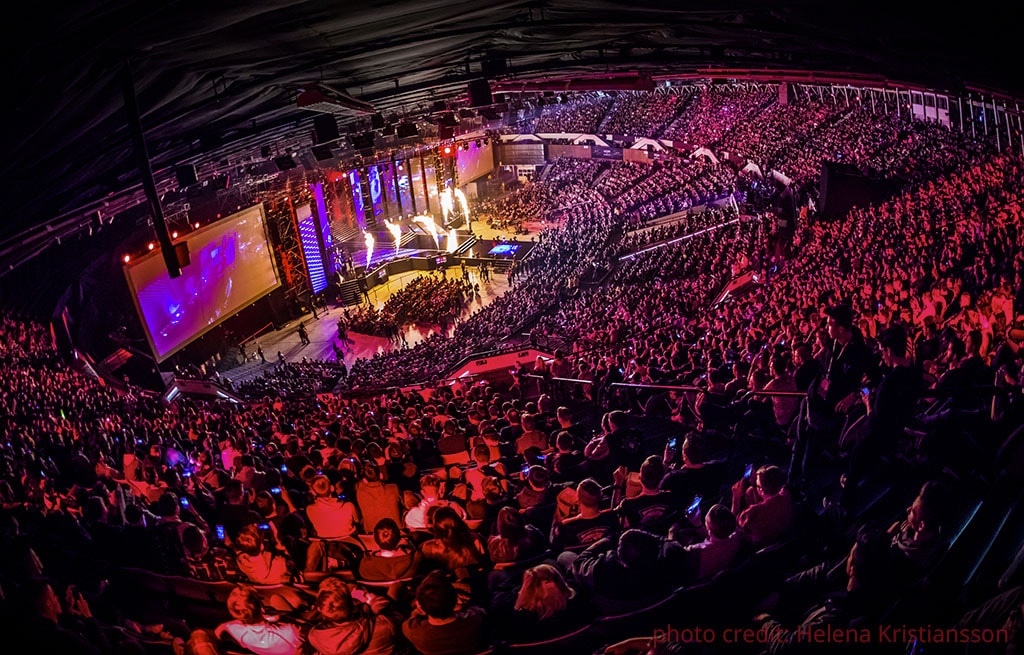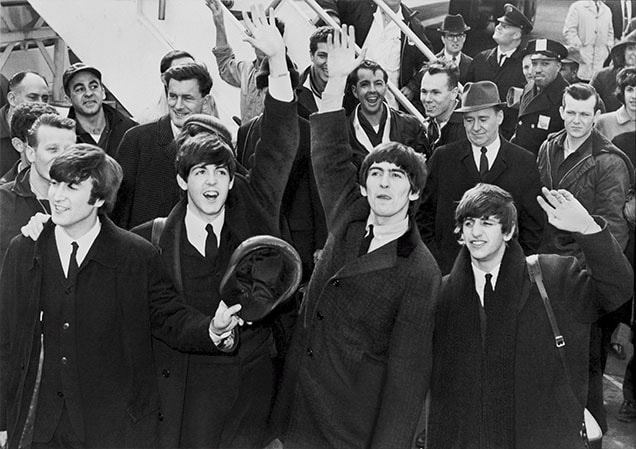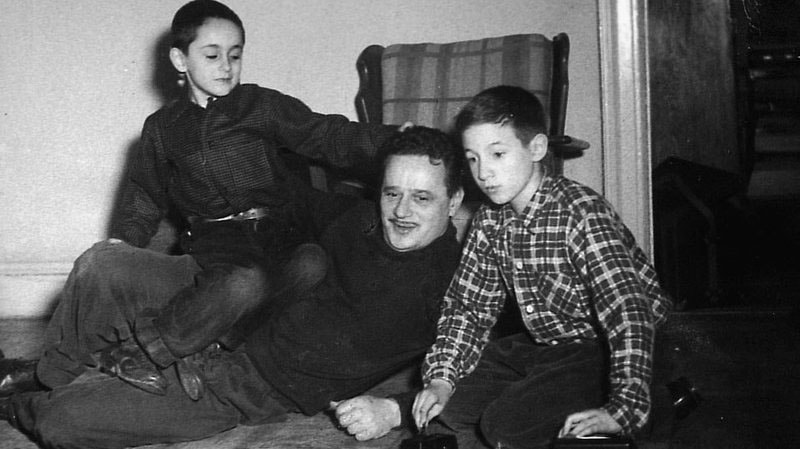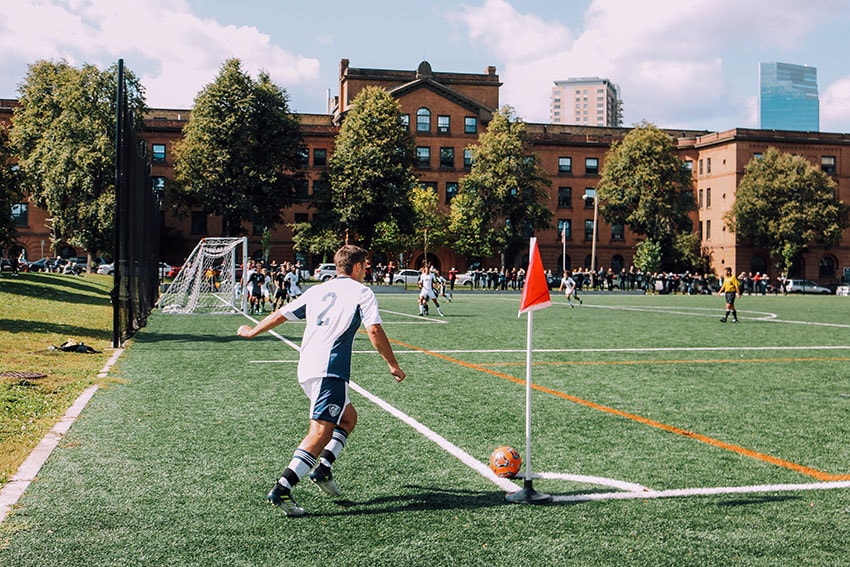Scott Lamar:
The number of schools offering music education in Pennsylvania and the nation, is in a steady decline and has been for more than a decade. Reduced budgets and shifting priorities are often to blame. Music For Everyone is a Lancaster based nonprofit working to raise awareness and resources to strengthen the role that music plays in schools and the community in the face of declining music programs.
Music For Everyone has provided over 6,000 instruments to Lancaster country schools since 2006, and there's a lot more going on there. Joining us is Dr. John Gerdy, who is the founder and executive director of Music For Everyone. Dr. Gerdy, welcome to the program.
John Gerdy:
Great to be here.
Scott Lamar:
Dr. John Gerdy, before we get into the current situation across the country, and across Pennsylvania, and in Lancaster County of music programs in schools, I think that your background and how Music For Everyone was founded and developed says a whole lot. You were an athlete. I don't know if you still are or not.
John Gerdy:
Not so much.
Scott Lamar:
You were an All American basketball player at Davidson College. You were the schools leading scorer until someone by the name of Steph Curry came along. Played pro basketball for three years. You would seem to be someone that would advocate strongly for athletics in schools, but yet, music is your passion and helping schools to ... I don't want to say maintain, but maintain in some areas, but further expand their music programs in others. How did it all come to be?
John Gerdy:
Well, I mean, you talk about my passion really is education. Education reform. It's preparing our children to compete in the global integrated world economy, and world community of the future. Education is my passion. After playing basketball, I ended up working in college athletics at the NCAA, and as the associate commissioner of the Southeastern Conference. I always did that because I viewed athletics as a tool to supplement the educational process if it's kept in the proper perspective.
With the birth of our first child, I left the SCC and was a stay at home parent for two children. As the kids got older, they didn't need dad around as much anymore. I had this wonderful opportunity to reinvent myself. I could've gone back into college athletics, but you know, been there done that. As a lifelong musician, I started doing the research on school music programs are being but, and underfunding, defunded. At the same time, all the research about how effective it is an educational and community building tool, and it just didn't' make sense to me.
You know, trying to think on acting, you know, on the notion of think globally, act locally, I got some friends together, did a small fundraiser. We raised about $11,000 and bought some instruments for the school district of Lancaster. It just kind of ... be careful what you ask you. It just kind of mushroomed. To me, it's not much of a jump because similar to athletics, which is a tool to supplement the educational process, if it's conducted in the right way, music is the same. It's a tool to contribute to the educational process.
I've come to the realization or belief, after being involved very heavily in both, as an athlete, or a musician, or as an administrator in both ends, that music, if you do a thorough honest clear eye data-driven return on educational investment, in dollars spent on, for example, football, tackle football, versus music programs, it's not very close. If you were keeping score, like a football game, you know, the score would be 55 for music and 20 for football. It's just that effective, right on down the line. Everything from the currency of the future's creativity. A lot of the jobs our children are going to have in the future, haven't even been invented yet. Music is the most effective tool in our educational arsenal to teach creativity.
Scott Lamar:
How do you measure that?
John Gerdy:
Music, at its core, music is about creativity. It's about thinking out of the box. Arts are about being able to color outside the lines without penalty. If you look at a number of other things as well, you look at lifelong learning. One of the most important functions of our schools is to develop and nurture in our children a love of lifelong learning. If you compare football, for example, versus music, 99% of the kid's last football game they play is the last time they'll ever play football.
But music, you can play it until, you know, your last days. In terms of lifelong learning, it's so much more effective. Just a mere fact that half of the student population, I mean in girls, can't play football, for example. Everyone can play music. Music is math. Music is reading. Music is logic. Music is a language. The data backs all that up. Every single day it seems there's a new study coming out about how music programs, involved in music programs, enhances these academic skills and interpersonal skills. The other thing is, you know, you talk about one of the major justifications for sports in our schools is that it teaches this concept of building character, teamwork, discipline, communication skills, personal responsibility. Well, you know, and it's true.
I've been on a five-person basketball team and being required to develop those types of skills, communication skills, discipline, teamwork, all those kinds of things, in pursuit of a common goal, which is winning, okay? But I've also been in a five-person band, trying to work together to achieve a common sound and it's the exact same things, discipline, teamwork, communication skills, personal responsibility. If you really take a close honest look at the data, the return on educational dollars invested in music is tremendous.
A lot of people talk about, is music a core course? Is it core? Is it co-curricular? Is it extracurricular? I kind of view it differently because of the universal nature of music, it's a universal language. I think music is more like the glue that can hold the entire core curriculum together. You can use music and apply it, and use it to teach science lessons, history lessons. Music is math. All of those things. The value of music as an educational tool is just astounding. The data coming out every single day reinforces that point.
Scott Lamar:
Most educators, maybe I shouldn't say most. I won't make a judgment there, but I would say many educators would agree with you with what you just said. But yet, if they said, "All right, we're going to cut ... we have a tight budget here and we have to cut some extracurricular activities." If they said we were going to cut the football program, or in some way cut back on that, compared to the music program, and not cut any funding from the music program, they would have people up in arms.
John Gerdy:
Yes, they would. That's something that I think as a ...
Scott Lamar:
By the way, I'm not saying that's right. I'm just saying, yeah, just an observation.
John Gerdy:
No, well, first of all, the football or athletics lobby, for a lack of a better term, is very well organized, very vocal. The music and arts community isn't quite as effective in its advocacy. I do think a lot of that is changing, particularly on the football side, driven by the, you know, revelations about head trauma. I think we're slowly changing. Again, we simply ... educational leaders and community leaders, we simply cannot continue to fund programs simply because we've always done it that way.
The world is changing too rapidly. We have to look at the data, look at the research, and ask an honest question, what is more effective, in terms of educational return on investment. We're operating ... the expectations of our schools and our teachers to instill in our children an education worthy of the 21st century, are rising dramatically. At the same time, in an environment of declining resources. That begs the question, we have to be more effective and efficient with every single educational dollar we spend. If you're honest about looking at it, take an honest look at it, the data is just irrefutable about how effective music is.
Scott Lamar:
You know, let me get back. I mean, we were kind of talking the broad picture about music, and athletics, extracurricular activities, but we didn't talk specifically about what Music for Everyone does.
John Gerdy:
“Our mission is to cultivate the power of music as an educational community-building tool in Lancaster County.”
Right. Our mission is to cultivate the power of music as an educational community-building tool in Lancaster County. What we do, basically, is we go to schools, we ask them what the gaps are, what their needs are. And then, we turn around to the community and we say, "Hey, does any of this interest you? If so, invest in us." And then, we will turn around and strategically, effectively, and efficiently invest those resources in schools, and in community arts groups throughout the county.
To date, we've been around for 12 years and we've invested, or I think we're closing in on close to I guess $1.7-million in total investment. Everything from an annual instrument grant program. Last year, for example, we awarded over $112,000 in grants for instruments. We give to all 16 schools districts in the county. The thing about it is, the gaps still exist because we received about a quarter of a million dollars in requests. If you provide instruments, then you know, you can provide a class of 30 kids or an orchestra of 30 kids, everyone a brand new instrument, but there's only one instructor. What's the point?
Next, we're underwriting music mentors, professional musicians, music education majors. That was the instruction component. We've just announced about two weeks ago or so, three weeks ago a third component, the third leg of the stool is a program instrument repair program where we are going to catalog and repair every single instrument, of every single public school in Lancaster County on an ongoing basis.
Scott Lamar:
Wow.
John Gerdy:
That's our next big thing. We've secured some seed grant money from the Stimmen Foundation and Clark Industries to get that up and going. For example, we did a pilot program at Colombia last summer where we repair 50-some odd instruments, something like that. Yeah, you got to take care of them if you're going to give them away. There's no room in the budget for repairs for schools.
Scott Lamar:
What about student participation? I mean, you're in a position to see okay, maybe there have been some schools that have cut back on their music programs, but are there fewer students, the same, more, that actually want to participate in music programs?
John Gerdy:
We believe that if you build it, they will come. One of the best things I've heard from a teacher just recently was talking about how their string program, it was in the school district at Lancaster, was expanding, and more kids being involved. When you pay attention to them, you give them instruments, you give them instruction, you make them feel important, it suddenly becomes cool. She said, you know, "The kids are starting to think, hey man, it's cool to be a part of the music program."
The other cool thing about now that we're around for 12 years, things are really starting to become full circle. For example, there's a young man in our program who's been a part of our MFE Strings, which is an after school program, and our summer camps since fourth grade. Just graduated McCaskey High School, and now he's coming back to serve as a mentor for the younger kids. A lot of it's starting to come full circle now. Again, if you build it, they will come. If as a community, or a school board, what you fund, what you prioritize, has an impact.
In other words, if you say it's important and then you fund it accordingly so that people see evidence, oh, this is important, then the community will follow. That's what we plan to continue to do with music education.
Scott Lamar:
You know, Lisa Sepsy said something that struck me. She was talking about Colombia and she said, "We are an artsy town, that art is important." The city of Lancaster, let's face it, the city of Lancaster in the last ten to fifteen years, has become an art's destination.
John Gerdy:
Yes.
Scott Lamar:
That would seem to say that the message is passed on to young people is the arts, including music, is important in this city.
John Gerdy:
Absolutely. You know, you talked about why ... I talk about sometimes the art community is not as effective as it needs to be as an advocacy. One of the reasons is because we've too long, we've just used the argument when fighting for funding, when fighting for, you know, for priorities in the school budget, arts for art's sake. Yes, arts for art's sake is important, it feeds the soul, it does all of those great things. But, we've also got to talk about the practical impacts. Impact on test scores, impact on reading skills, impact on kids wanting to be engaged in school.
Also, the economic impact of music and the arts in our communities. The argument needs to be more, it's not just arts for art's sake. That's just, you know, a fluffy thing to do. It's important because it's driving our economy in a lot of ways. Lancaster is a tremendous example out that, about strategically investing in the arts to build a community for economic vitality. We've been very successful at doing that.
Scott Lamar:
You've been successful in doing it. Again, I kind of go back to that, what we had discussed earlier, that getting society as a whole to understand how important this is. How do you do that?
John Gerdy:
You pound away. Day in and day out. Again, it's data. The data is out there for you. If you look at the data, in terms of music's educational impact on all of this wide area. For example, when we went to school, the idea of international learning opportunities, exchange programs, tours, and stuff like that, were nonexistent, right? In today's interconnected global economy and world community, our schools are expected to provide some sort of international flavor, international opportunities. Music is a tremendous platform to do that because it's the international language or the universal language.
Scott Lamar:
We only have a minute or so to go, but I want to thank you very much for being with us. I do have a quick from a lister says, "Has several musical instruments from his father's estate." Do you know where he can donate them for this cause?
John Gerdy:
Well, we could contact us and we could help him, musicforeveryone.org.
Scott Lamar:
Okay. What are you looking, I mean, in 30 seconds or less, what kind of message would you like to leave with your guests? What do you need?
John Gerdy:
Anything and everything. I mean, we are every day out there scrapping, and trying, and trying to generate resources, and then turn ... whether it's volunteers, whether it's cash, whether it's instruments, to then turn around and invest them strategically to enhance our music programs in our communities.
Scott Lamar:
John Gerdy is found and executive of Music For Everyone in Lancaster County. You know, this is something that can spread beyond the Lancaster county borders, I'm sure. John, thank you very much for being with us today.
John Gerdy:
Thank you.

